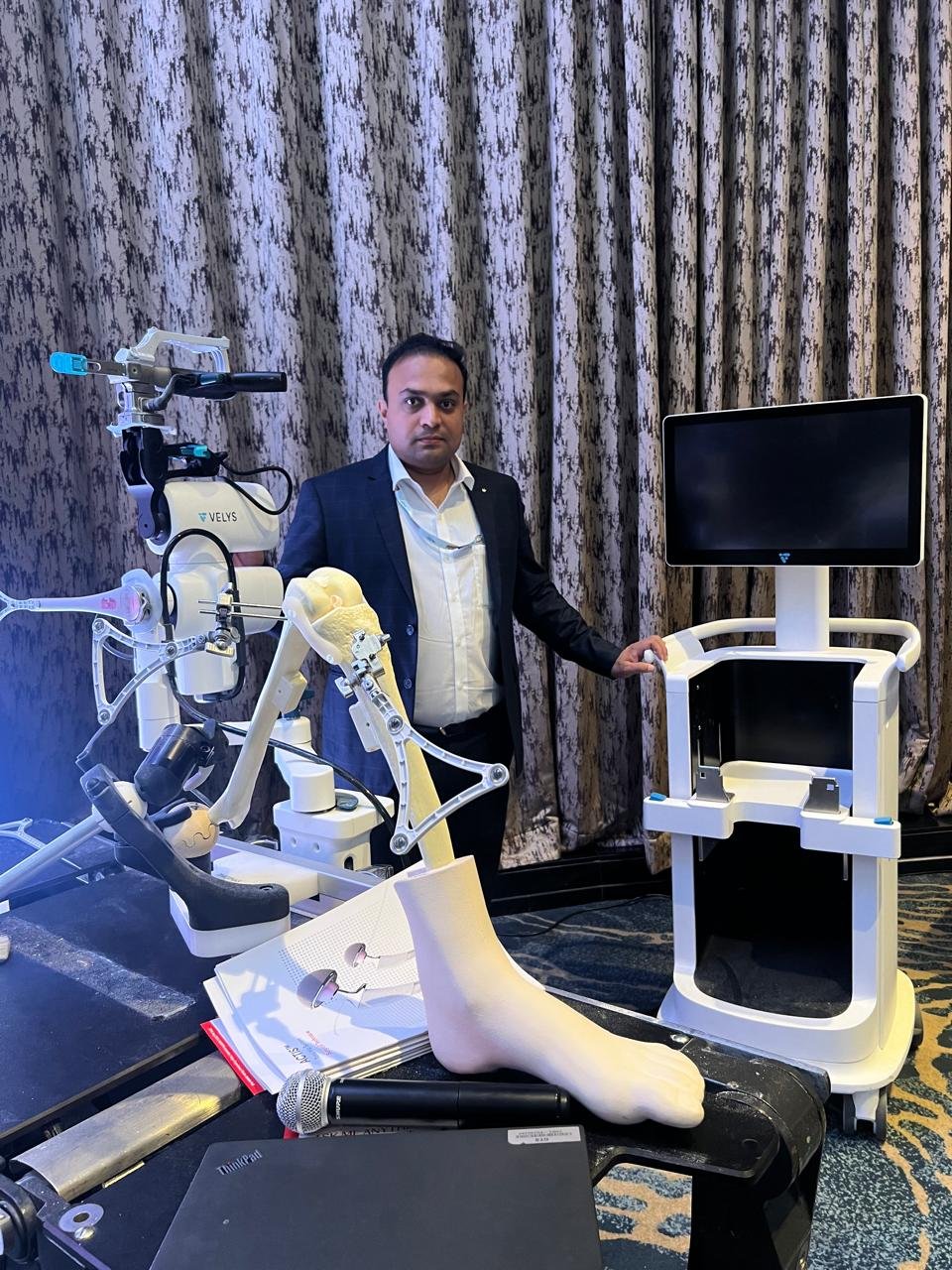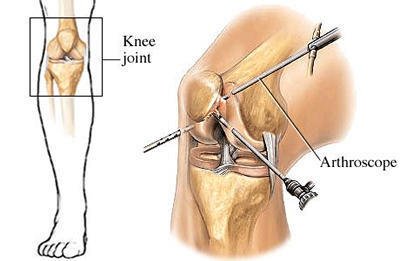Meet Our Doctor

Dr. Prajaktam M. Lende
ORTHOPAEDIC & JOINT REPLACEMENT SURGEON
Fellowships
- Navigation Based Joint Replacement Surgery (Hip & Knee Arthroplasty)
- Arthroscopy & Sport Medicine
- Ilizarove Surgery
- Observer Ship in Pediatric Orthopaedic Surgery (Wadia Hospital, Mumbai)
Knee Arthroscopy Surgery In Nagpur
Home / Knee Arthroscopy Surgery In Nagpur

Knee Arthroscopy Surgery
Knee arthroscopy Surgery is a treatment that permits doctors to look at the ginglymoid joint while not creating an oversized incision (cut) through the skin and alternative soft tissues. surgery is employed to diagnose and treat a large vary of knee issues.
throughout knee surgery, your doctor inserts alittle camera, referred to as AN endoscope, into your ginglymoid joint. The camera displays photos on a video monitor, and your doctor uses these pictures to guide miniature surgical instruments.
Because the endoscope and surgical instruments ar skinny, your doctor will use terribly tiny incisions, instead of the larger incision required for open surgery. This leads to less pain and joint stiffness for patients, and infrequently shortens the time it takes to recover and come back to favorite activities.
Anatomy
Your knee is that the largest joint in your body and one in all the foremost complicated. The bones that conjure the knee embody the lower finish of the thighbone (thighbone), the higher finish of the shin (shinbone), and therefore the patella (kneecap).
When Knee surgery is usually recommended?
Your doctor could suggest knee surgery if you have got a painful condition that doesn’t answer nonsurgical treatment. nonsurgical treatment includes rest, physiotherapy, and medications or injections which will scale back inflammation.
Knee surgery could relieve painful symptoms of the many issues that harm the animal tissue surfaces and alternative soft tissues encompassing the joint.
Common arthroscopic procedures for the knee include:
Partial extirpation (removal of the meniscus), repair of a torn cartilage, or cartilage transplantation
Reconstruction of a torn anterior cruciform ligament or posterior cruciform ligament
Removal of inflamed secretion tissue
Trimming or reconstruction of broken body part animal tissue
Removal of loose fragments of bone or animal tissue, like those caused by secretion chondromatosis
Treatment of patella (kneecap) issues
Treatment of knee infection (infection)
Preparing for Surgery
Evaluations and Tests
Your medical science doctor could suggest that you simply see your primary doctor to assess your general health before your surgery. they’re going to establish any issues which will interfere with the procedure. If you have got bound health risks, a additional intensive analysis is also necessary before your surgery.
To help set up your procedure, your medical science doctor could order operative tests. These could embody blood tests or AN graph (EKG).
Admissions directions
If you’re typically healthy, your knee surgery can possibly be performed as AN patient procedure. this implies you’ll not got to keep nightlong at the hospital.
Be sure to tell your medical science doctor of any medications or supplements that you simply take. you will got to stop taking a number of these before surgery.
The hospital or surgery center can contact you before time to supply specific details concerning your procedure. ensure to follow the directions on once to arrive and particularly on once to prevent uptake or drinking before your procedure.
Anesthesia
Before your surgery, a member of the physiological state team can speak with you. Knee surgery are often performed beneath native, regional, or general anesthesia:
Local physiological state numbs simply your knee
Regional anesthesia numbs you below the waist
General physiological state puts you to sleep
Your medical science doctor and your specialist can discuss with you concerning that methodology is best for you.
Description
Three differing kinds of pain relief (anesthesia) is also used for knee surgery surgery:
Local anesthesia. Your knee is also numbed with pain drugs. you will even be given medicines that relax you. you’ll sit up.
Spinal physiological state. this can be conjointly referred to as regional anaesthesia. The pain drugs is injected into an area in your spine. you’ll be awake however won’t be able to feel something below your waist.
General anesthesia. you’ll be asleep and unpainful.
Regional nerve block (femoral or adductor muscle canal block). this can be another form of regional anaesthesia. The pain drugs is injected round the nerve in your groin. you’ll be asleep throughout the operation. this sort of physiological state can block out pain so you wish less general anaesthesia.
A cuff-like device is also place around your thigh to assist management haemorrhage throughout the procedure.
At the tip of your surgery, the saline are going to be drained from your knee. The doctor can shut your cuts with sutures (stitches) and canopy them with a dressing. several surgeons take photos of the procedure from the video monitor. you will be able to read these photos when the operation so you’ll see what was done.
Why the Arthroscopy Is Performed?
Arthroscopy is also suggested for these knee problems:
Torn cartilage. cartilage is animal tissue that cushions the house between the bones within the knee. Surgery is finished to repair or take away it.
Torn or broken anterior cruciform ligament (ACL) or posterior cruciform ligament (PCL).
Small items of broken animal tissue within the ginglymoid joint.
Removal of a Baker cyst. this can be a swelling behind the knee that’s full of fluid. generally the matter happens once there’s swelling and pain (inflammation) from alternative causes, like inflammatory disease.
When is this operation helpful?
There are two main reasons to have a knee arthroscopy:
To repair or remove damaged structures in the knee. This may include removing torn pieces of cartilage or meniscus (the knees shock absorbers), removing loose pieces of cartilage or bone, repairing a torn meniscus or damaged cartilage or cleaning out infection within the knee joint
To confirm the clinical diagnosis and to assess the quality of the remaining structures inside the knee joint. This is not a common reason to undergo knee arthroscopy surgery
Complications
The complication rate after arthroscopic surgery is very low. If complications occur, they are usually minor and are treated easily. Possible postoperative problems with knee arthroscopy include:
- Infection
- Blood clots
- Knee stiffness
- Accumulation of blood in the knee
- Bruising or swelling
Recovery
After surgery, you will be moved to the recovery room and should be able to go home within 1 or 2 hours. Be sure to have someone with you to drive you home and check on you that first evening.
While recovery from knee arthroscopy is faster than recovery from traditional open knee surgery, it is important to follow your doctor’s instructions carefully after you return home.
Best AVN treatment In Nagpur
Dr. Prajaktam Lende is a trusted Orthopedic doctor In Nagpur. Top joint Replacement surgery Doctor in Nagpur. Book an Appointment with Dr Prajaktam M. Lende, one of the prominent orthopaedic surgeon specialised in Joint Replacement surgery and ligament Reconstruction surgery Dr Prajaktam M. Lende at Nagpur. He is currently associated with the Orthopedic & Joint …
